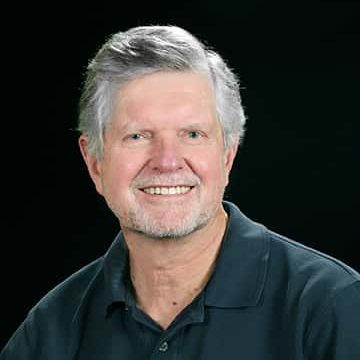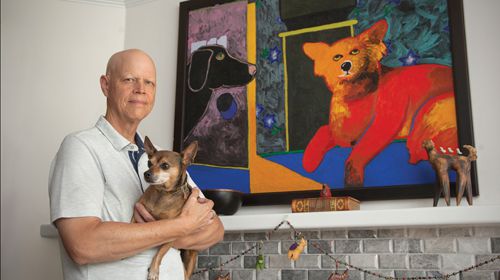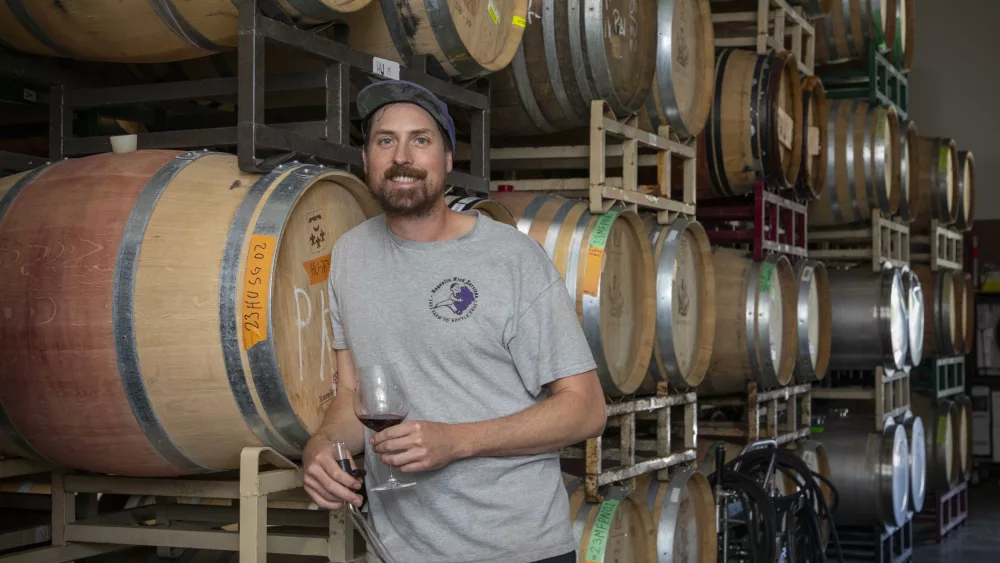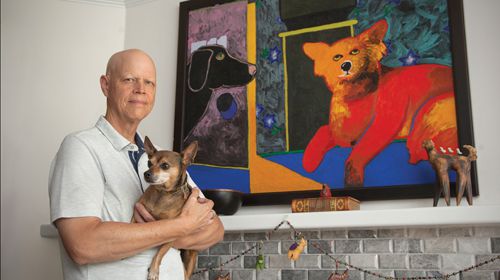
The night of October 8, 2017, will be forever etched in the minds of Napa and Sonoma County residents. In the most destructive fire in California’s history, 5,000 homes burned and 44 people lost their lives. While still trying to cope with the reality of what had happened, stunned homeowners would begin the insurance claim process. Their experiences would vary considerably. Here’s a look at how a few homeowners are contending with the insurance claims process.
The Fishers—Santa Rosa
Six years ago Brooks and Kim Fisher purchased a beautiful home on Bennett Ridge in Santa Rosa. The property had stunning views of the valley and the hills beyond. At around 2 a.m. on the morning of October 9, a neighbor pounded on the door shouting, “You have to get out now!” Brooks grabbed his laptop and Kim her purse. They drove away through wind-whipped sparks and homes afire at either side. Days later the neighbor’s son would hike back into the area. His photos confirmed the destruction, and the loss of their home.
The Fishers contacted their insurance company Nationwide, and the claim process began. “Nationwide was helpful throughout, though the gathering of data was tedious and time consuming,” Brooks says. “They needed house plans to determine materials used, and a list of personal belongings. Fortunately, the architect had blueprints. And I managed to get receipts from credit card companies and from stores where we had purchased the larger items.” Six months after the fire, the Fishers received the insurance monies. “We loved the area,” says Brooks. “But we’d been through home construction before. It’s a two-year process. We didn’t have the energy to do that again.” The Fishers purchased a condo in Sonoma. And following debris removal, they put their lot on the market. “I miss having a garden,” says Brooks. “But for now, where we are works.”
The Dormans—Glen Ellen
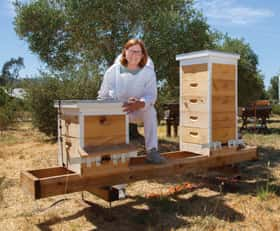 In 2010, Tim and Lauri Dorman bought a 2,000 square-foot house in Glen Ellen that they remodeled. Seven years later, on recalling that fateful night in October, Lauri said, “We had just returned from an out-of-town wedding. We were tired and turned in early. Loud pounding at the front door woke us. Our neighbor, his eyes as big as saucers, stood there shouting about a fire.” The Dormans grabbed their dog, a few items and left, fully expecting to return soon. As they drove away, that expectation would change. “Through heavy smoke, we saw the ridge afire. It was dark and eerily quiet— no sirens, no emergency vehicles, no mass exodus of cars. We reached Sear’s Point thinking we were safe, and then we saw fire there, too. We were one of the last cars out on Highway 37. Hours later at our daughter’s house in San Rafael, we received news that our house was gone.” On returning to their Glen Ellen site, Lauri, a beekeeper, went to check on her five hives. They had burned. One lone bee circled in the still smoky air looking for its home.
In 2010, Tim and Lauri Dorman bought a 2,000 square-foot house in Glen Ellen that they remodeled. Seven years later, on recalling that fateful night in October, Lauri said, “We had just returned from an out-of-town wedding. We were tired and turned in early. Loud pounding at the front door woke us. Our neighbor, his eyes as big as saucers, stood there shouting about a fire.” The Dormans grabbed their dog, a few items and left, fully expecting to return soon. As they drove away, that expectation would change. “Through heavy smoke, we saw the ridge afire. It was dark and eerily quiet— no sirens, no emergency vehicles, no mass exodus of cars. We reached Sear’s Point thinking we were safe, and then we saw fire there, too. We were one of the last cars out on Highway 37. Hours later at our daughter’s house in San Rafael, we received news that our house was gone.” On returning to their Glen Ellen site, Lauri, a beekeeper, went to check on her five hives. They had burned. One lone bee circled in the still smoky air looking for its home.
A few days later the Dormans met with an adjuster from State Farm brought in from Houston. “A lovely man,” says Lauri. The adjuster explained the terms of the policy, then said, “I’m here for you. I’ll make sure you get $125 a square foot so you can rebuild.” Lauri gasped. “This isn’t Houston,” she said. The Dorman’s located a rental nearby. The adjuster said that the rent amount would be deducted from their dwelling coverage. “I knew that wasn’t right,” Lauri said. “We had a separate provision in the policy covering 24 months of temporary living cost.” Later the adjustor called to apologize. He had made a mistake. “We lost all confidence in our insurer,” Lauri said. “We’re at retirement age. There was too much money at stake.” So the Dormans hired D B Salomon a public adjustor out of Sacramento to deal with the adjuster directly. During the process the insurance company offered to settle the personal belongings claim for 75 percent. They declined. “We continued with the emotionally exhausting and draining inventory process to capture [the value of] all our personal belongings. We paid 100 percent of the premiums. We expected the full amount.” Nine months after the fire, the insurance company did just that. State Farm issued a check for the full dwelling and the personal belongings claims. “Our long nightmare had finally come to an end,” Lauri said. “Now we could focus on the rebuild.”
Carol Poole—Napa
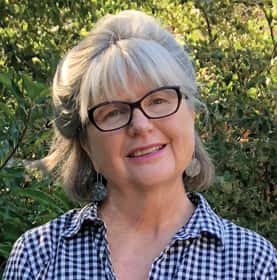 The night of the firestorm, Carol Poole of Napa, awoke to the sound of her phone ringing and a frantic message. A friend alerted her to the fire raging on Atlas Peak. Poole rushed out and saw an ominous red glow across the ridgeline. She grabbed a few items and left. Though expecting to return, she took her insurance policy with her. Hours later she -received news that the 2,300-square-foot, two story house she had lived in for 30 years along with the barn, garage and the guest cottage had burned to the ground. She contacted AAA, her insurance company.
The night of the firestorm, Carol Poole of Napa, awoke to the sound of her phone ringing and a frantic message. A friend alerted her to the fire raging on Atlas Peak. Poole rushed out and saw an ominous red glow across the ridgeline. She grabbed a few items and left. Though expecting to return, she took her insurance policy with her. Hours later she -received news that the 2,300-square-foot, two story house she had lived in for 30 years along with the barn, garage and the guest cottage had burned to the ground. She contacted AAA, her insurance company.
The adjustor requested a set of blueprints and list of belongings. Poole had neither. With an architect friend, she returned to the site and together they measured the foundation. From those measurements the architect re-created a set of plans. For more than four hours Poole sat in a coffee shop with the adjuster going room-by-room trying to recall materials used in each. For personal belongings she went through a similar, though more exacting process. Her mind wandered through closets, opened cabinets and drawers, in an attempt to remember contents. On completion she submitted a 66-page list of items to the insurance company.
Poole attended several United Policyholders workshops in Santa Rosa. “What I learned there was invaluable. I couldn’t have done it on my own,” she says. “The first meeting I went to was standing room only. Attendees received a copy of the book, The Disaster Recovery Handbook & Inventory Guide written by Carol Ingalls Custodio and Amy Bach, United Policyholders co-founder. That book became my bible.”
Before the fire, Poole’s property had a market value of $1.2 million. On settlement she received $700,000 for dwelling loss. “The cost to rebuild sky rocketed after the fire,” says Poole. “I can’t replace what I had before. It will be a much smaller place. Housing in California is expensive. And after a disaster, costs go higher. I wonder if homeowners in other areas who lose everything face the same issues?”
Guidance for homeowners
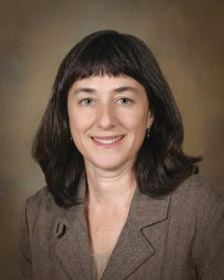 Attorney Amy Bach cofounded United Policyholders in 1991, two years after the Oakland Hills wildfire destroyed more than 3,000 homes. The nonprofit advocates for the insured, providing guidance and helping homeowners through the complex, often adversarial, claims process. United Policyholders, based in San Francisco, paid staff plus a national network of dedicated volunteers: insurance professionals, lawyers, disaster survivors, financial planners, construction experts and retired judges. They assist homeowners in recovering losses from natural disasters.
Attorney Amy Bach cofounded United Policyholders in 1991, two years after the Oakland Hills wildfire destroyed more than 3,000 homes. The nonprofit advocates for the insured, providing guidance and helping homeowners through the complex, often adversarial, claims process. United Policyholders, based in San Francisco, paid staff plus a national network of dedicated volunteers: insurance professionals, lawyers, disaster survivors, financial planners, construction experts and retired judges. They assist homeowners in recovering losses from natural disasters.
“Since the fires in the North Bay we have held a number of workshops —13 so far in Santa Rosa and three in Napa, with more scheduled,” Bach said. These Roadmap to Recovery workshops covered a range of topics— Remedies for the Underinsured and Settling Valuation Disputes, Strategies for Collecting What You Are Owed and Strategies for Healing and Dealing. Approximately 300 to 400 people have attended each of the Santa Rosa sessions; another 50 to 60 came to the sessions in Napa. Through the workshops, the panel discussions set up by Sonoma County Supervisor Susan Gorin and access to tools on our website, Bach estimates UP has reached more than half of the homeowners affected by the fires. “Some insurance companies are easier to deal with than others,” Bach said. “Same for adjusters. The more the insured knows and the better prepared, the better the chances of a fair outcome.”
Six months following the fire, United Policyholders sent a survey to Napa and Sonoma County homeowners. 880 responded. “That’s the highest response ever for any of our California wildfire surveys,” Bach said. Two thirds of respondents felt they were underinsured. (See “Survey Results”.)
“This is not surprising,” Bach said. “Homeowners rely on their insurance companies to keep their dwelling coverage in line with increased market valuations and replacement cost, but after every disaster it’s clear insurers are not doing that. UP is constantly working to remedy chronic underinsurance by educating consumers and calling on insurers to be more accurate when insuring dwellings for replacement cost. For those in areas prone to earthquakes, wildfires and other natural disasters, it’s particularly important to maintain adequate coverage.”
Industry publication Insurance Journal conducted an online survey of 1,000 individuals. Survey results showed that 87 percent expressed concern about a natural disaster striking their area, though few had taken measures to protect themselves from being underinsured or uninsured. For those indicating that they had taken action, only 18 percent increased their coverage.
Higher construction costs are inevitable in the wake of a wide spread disaster. Provided basic dwelling coverage is adequate, those increased costs can be mitigated through an extended replacement coverage endorsement. The provision provides for an amount of anywhere from 20 to 200 percent over the policy’s dwelling coverage limitation. For example, if the policy has a 50 percent extended cost endorsement and the dwelling insured amount is $500,000, then $750,000 would be available for rebuild.
Coffee Strong
 Jeff Okrepkie, resident of Coffey Park, lost his home along with many of his neighbors. On various social media sites, he detected much misinformation and an overlap of efforts. He spearheaded the first two meetings for residents, an advocacy group was formed and later was dubbed Coffey Strong. Hundreds of Coffey Park residents attended the newly formed organization’s sessions held at the local community college. Signs reading “Coffey Strong” quickly appeared amidst the rubble. “Many who had lost everything didn’t understand the recovery process,” says Okrepkie. “And that’s understandable. No one expects to have to deal with a cataclysmic event.” A large number of homes lost hadn’t been appraised in years. Coverage wasn’t current with replacement value leaving homeowners unsure as to what they were entitled to in a settlement. Amounts offered by the same carriers varied considerably. To deal with this disconnect Coffey Strong launched a website listing resident’s insurance carriers, settlement amounts offered and quotes from contractors. This valuable, timely information provided homeowners with leverage for negotiations. “Before the fire, we hardly knew each other,” says Okrepkie. “Now we are a community on the rebound.
Jeff Okrepkie, resident of Coffey Park, lost his home along with many of his neighbors. On various social media sites, he detected much misinformation and an overlap of efforts. He spearheaded the first two meetings for residents, an advocacy group was formed and later was dubbed Coffey Strong. Hundreds of Coffey Park residents attended the newly formed organization’s sessions held at the local community college. Signs reading “Coffey Strong” quickly appeared amidst the rubble. “Many who had lost everything didn’t understand the recovery process,” says Okrepkie. “And that’s understandable. No one expects to have to deal with a cataclysmic event.” A large number of homes lost hadn’t been appraised in years. Coverage wasn’t current with replacement value leaving homeowners unsure as to what they were entitled to in a settlement. Amounts offered by the same carriers varied considerably. To deal with this disconnect Coffey Strong launched a website listing resident’s insurance carriers, settlement amounts offered and quotes from contractors. This valuable, timely information provided homeowners with leverage for negotiations. “Before the fire, we hardly knew each other,” says Okrepkie. “Now we are a community on the rebound.
Napa County
Napa County, 555 homes were destroyed. In a survey conducted by the county, 51 percent of respondents indicated they were underinsured. That was considerably less than the response to the United Policyholders survey. The discrepancy perhaps reflects the demographics of the Napa areas affected. “Many homeowners, particularly those in Silverado, were fully insured,” says Randy Gularte of Sotheby’s International.
Insurance coverage
Heffernan Insurance Brokers, founded in 1988, is an employee-owned, nationwide firm offering a wide range of insurance, employee benefits and financial services products. According to Liz Bishop, senior vice president, insurance companies have been under considerable pressure to expedite claims related to the wildfires. “What happened in the our area was high profile. Many interested parties, including the State Insurance Commissioner, got involved,” she says. “Processing of a claim tends to go smoother if the adjuster is from the West Coast. They’re simply more familiar with California’s high rebuilding costs, and that often leads to a more realistic settlement with the insurance company.” Following the fire 30 to 40 percent of Heffernan’s clients requested to have their homeowner insurance coverage reevaluated. “When policies come up for renewal, we’ll be doing that with everyone,” says Bishop. She expects some insurance carriers to revise their underwriting practices for areas most prone to conflagration. “Standards will be stricter,” she adds. “Hillside homes with limited access will be problematic, as will houses beyond five miles of a fire station or more than 1,000 feet from a fire hydrant.”
George Petersen Insurance, with 10 offices and a staff of 200, is one of the largest independent insurance brokerage firms in the North Bay. They work with more than 100 insurance companies. Rich Stark, personal lines manager, has been with the firm for eight years. He expects competition will push carriers who only offer 20 to 25 percent extended replacement coverage, to 50 percent or beyond. “And I wouldn’t be surprised to see temporary living cost coverage extended past 24 months,” says Stark. “In a wide spread disaster like we’ve been through, it can take more than two years to line up the resources needed to rebuild.”
The total amount of loss claims submitted as a result of the North Bay fire exceeded $9 billion dollars. The settlement of personal belongings claims proved to be the most contentious. Personal belongings coverage in policies provides for an “up to” amount. The actual amount paid is determined by the claim submitted and the individual insurance company’s practices. Those practices vary. Some companies require a full inventory and receipts for 100 percent reimbursement. Some will accept an estimate. Others waive the inventory requirement and then offer to settle for less. In a total loss, records are destroyed and homeowners, in shock, often find themselves emotionally incapable of dealing with tedious inventory issues. Payouts for a dwelling are more formulaic. Belongings are about memories. How can you put a value on a wedding album or early baby pictures?
The risk of California living
In most areas in the U.S., residents have to contend with the threat of a natural disaster be it a blizzard, a wildfire, an earthquake, a hurricane or a tornado. Two of those threats occur in California. And yet most Californians wouldn’t want to live anywhere else. Considering the risk of living here can be stressful, adequate insurance with a responsive insurance carrier can offer some peace of mind.
Survey Results
Average Underinsured Amount……….$317,309
Median……………………………………….. $250,000
Maximum……………………………………..$2,000,000
Mininum……………………………………….$10,000
Total Underinsured:……………………….$88,211,840
For more information, visit www.uphelp.org/surveyresults
Pending Homeowner Insurance Legislation
Following is a brief overview of pending homeowners insurance legislation.
SB 824 would prohibit insurers from canceling or not renewing a homeowner’s policy for one year in a county with a declared state of emergency. That same protection would be extended to homes in the area that survived.
SB 894 would allow policyholders to combine various coverage within the policy to pay any covered losses. Insured if the losses resulted from a declared disaster, total loss and if they are underinsured on the primary dwelling. Policies could be renewed twice, on an annual basis, following loss.
SB 897 requires insurers to pay 80 percent of the limit of a policyholder’s personal property coverage without the requirement for a written inventory.
AB 1772 extends the time an insured has to rebuild from two to three years.
AB 1797 would provide that homeowners receive an updated replacement cost estimate for their home every other year from their insurer. Or the insurer could apply an inflation factor to the dwelling coverage at each renewal and offer the option of obtaining a replacement cost estimate.
AB 1799 provides that homeowner can request receipt of a full set of certified policy documents within 30 days of the covered loss.
AB 1800 states that policyholders could use extended replacement cost monies to rebuild at the same location, at a new location, or purchase an existing property.
AB 1875 provides homeowners with options to protect against the risk of being underinsured. If their insurer does not provide extended replacement coverage up to 50%, the insurer must help the homeowner locate an insurer that does.
The proposed legislation is not retroactive
www.insurance.ca.gov


